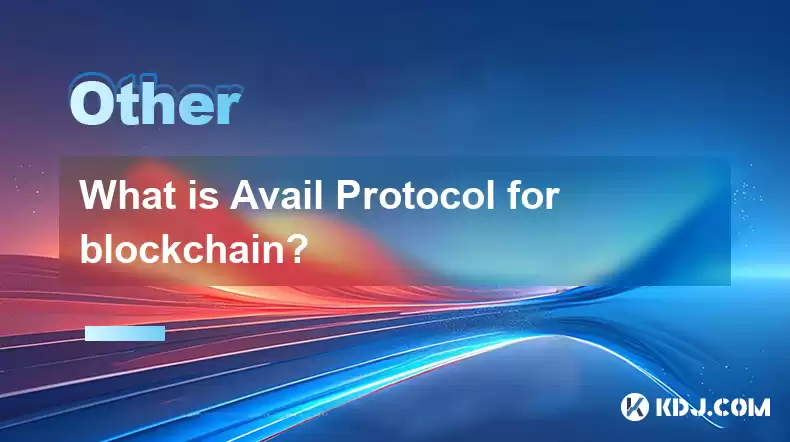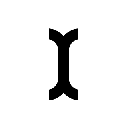-
 Bitcoin
Bitcoin $114000
0.88% -
 Ethereum
Ethereum $3484
1.43% -
 XRP
XRP $2.908
2.54% -
 Tether USDt
Tether USDt $0.0000
0.03% -
 BNB
BNB $750.7
0.89% -
 Solana
Solana $162.0
1.01% -
 USDC
USDC $0.9998
0.01% -
 TRON
TRON $0.3257
1.53% -
 Dogecoin
Dogecoin $0.1993
2.48% -
 Cardano
Cardano $0.7264
4.07% -
 Hyperliquid
Hyperliquid $38.33
2.79% -
 Stellar
Stellar $0.3986
7.87% -
 Sui
Sui $3.417
2.30% -
 Chainlink
Chainlink $16.24
3.45% -
 Bitcoin Cash
Bitcoin Cash $541.5
2.34% -
 Hedera
Hedera $0.2480
7.63% -
 Ethena USDe
Ethena USDe $1.001
0.05% -
 Avalanche
Avalanche $21.36
1.47% -
 Toncoin
Toncoin $3.631
0.03% -
 Litecoin
Litecoin $109.3
4.09% -
 UNUS SED LEO
UNUS SED LEO $8.954
-0.06% -
 Shiba Inu
Shiba Inu $0.00001220
2.91% -
 Polkadot
Polkadot $3.587
2.62% -
 Uniswap
Uniswap $9.139
3.54% -
 Monero
Monero $299.3
2.17% -
 Dai
Dai $1.000
0.01% -
 Bitget Token
Bitget Token $4.335
1.82% -
 Pepe
Pepe $0.00001044
3.27% -
 Cronos
Cronos $0.1336
4.99% -
 Aave
Aave $258.0
3.20%
What is Avail Protocol for blockchain?
Avail Protocol enhances blockchain scalability and security by providing a dedicated layer for data availability, improving efficiency and supporting DeFi, NFTs, and gaming.
Apr 15, 2025 at 10:21 am

The Avail Protocol is a pivotal innovation in the blockchain ecosystem, designed to enhance the scalability and efficiency of blockchain networks. It focuses on providing a robust solution for data availability, which is crucial for the operation and security of blockchain systems. In this article, we will explore the intricacies of the Avail Protocol, its functionalities, and its impact on the blockchain landscape.
What is Data Availability in Blockchain?
Data availability is a fundamental aspect of blockchain technology that ensures all participants in a network can access the data needed to validate transactions and maintain the integrity of the blockchain. Without sufficient data availability, the network becomes vulnerable to attacks and inefficiencies. The Avail Protocol addresses this challenge by offering a dedicated layer for data availability, thereby enhancing the overall performance and security of blockchain networks.
How Does Avail Protocol Work?
The Avail Protocol operates as a layer 1.5 solution, meaning it sits between the base layer (layer 1) and the application layer (layer 2) of a blockchain network. It is designed to offload the burden of data availability from the base layer, allowing the network to focus on transaction processing and consensus mechanisms. Here's how it works:
- Data Sharding: Avail Protocol uses sharding to distribute data across multiple nodes, ensuring that the data is redundantly stored and easily accessible.
- Light Clients: It supports light clients, which are nodes that do not store the entire blockchain but can still verify the integrity of the data. This reduces the storage requirements for participants.
- Proof of Availability: The protocol implements a proof of availability mechanism, which allows nodes to prove that they have access to the necessary data without needing to download the entire dataset.
Benefits of Using Avail Protocol
The implementation of the Avail Protocol brings several advantages to blockchain networks:
- Scalability: By offloading data availability to a dedicated layer, the base layer can handle more transactions per second, thus improving the overall scalability of the network.
- Security: Enhanced data availability reduces the risk of data withholding attacks and ensures that all participants can verify transactions accurately.
- Efficiency: With a separate layer for data availability, the network can operate more efficiently, as the base layer is not bogged down by data management tasks.
Avail Protocol and Its Impact on Layer 2 Solutions
Layer 2 solutions, such as rollups and sidechains, rely heavily on the base layer for data availability. The Avail Protocol can significantly enhance the performance of these solutions by providing a more efficient and secure data availability layer. This is particularly beneficial for:
- Rollups: Rollups aggregate multiple transactions into a single transaction on the base layer. With Avail Protocol, the data required to validate these transactions can be more easily accessed, improving the throughput and reducing costs.
- Sidechains: Sidechains operate parallel to the main blockchain and often need to interact with the base layer for data verification. Avail Protocol simplifies this interaction, making sidechains more efficient and secure.
Integration of Avail Protocol with Existing Blockchains
Integrating the Avail Protocol with existing blockchain networks is a straightforward process that can be achieved through several steps:
- Assessment: Evaluate the current data availability mechanisms of the blockchain to identify areas where Avail Protocol can provide improvements.
- Integration: Implement the Avail Protocol as a layer 1.5 solution, ensuring that it communicates effectively with the base layer and any existing layer 2 solutions.
- Testing: Conduct thorough testing to ensure that the integration does not disrupt the existing operations of the blockchain and that the data availability layer functions as intended.
- Deployment: Roll out the integrated Avail Protocol across the network, monitoring its performance and making any necessary adjustments.
Use Cases of Avail Protocol in the Cryptocurrency Ecosystem
The Avail Protocol has a wide range of applications within the cryptocurrency ecosystem, enhancing the functionality and performance of various blockchain-based projects:
- Decentralized Finance (DeFi): DeFi platforms can leverage Avail Protocol to improve the scalability and security of their operations, enabling faster and more reliable transactions.
- Non-Fungible Tokens (NFTs): NFT marketplaces can benefit from the enhanced data availability provided by Avail Protocol, ensuring that the metadata associated with NFTs is easily accessible and verifiable.
- Gaming and Metaverse: Blockchain-based gaming and metaverse projects can use Avail Protocol to manage the large volumes of data required for in-game assets and virtual environments, improving the user experience.
Technical Specifications of Avail Protocol
Understanding the technical specifications of the Avail Protocol is essential for developers and blockchain enthusiasts looking to implement or understand its functionality:
- Consensus Mechanism: Avail Protocol uses a variant of the proof of stake (PoS) consensus mechanism to ensure that nodes are incentivized to maintain data availability.
- Data Compression: The protocol employs advanced data compression techniques to minimize the storage requirements for data availability, making it more efficient.
- Interoperability: Avail Protocol is designed to be interoperable with various blockchain networks, allowing for seamless integration and data sharing across different ecosystems.
Frequently Asked Questions
Q: Can Avail Protocol be used with any blockchain network?
A: Yes, Avail Protocol is designed to be compatible with a wide range of blockchain networks, including both public and private blockchains. Its flexibility allows it to enhance the data availability of various types of networks.
Q: How does Avail Protocol handle data privacy?
A: Avail Protocol ensures data privacy through encryption and secure data storage practices. While the data is made available to the network, it is encrypted to protect sensitive information.
Q: What are the costs associated with implementing Avail Protocol?
A: The costs of implementing Avail Protocol can vary depending on the size and complexity of the blockchain network. However, the protocol is designed to be cost-effective, with minimal overhead compared to the benefits it provides in terms of scalability and security.
Q: Is Avail Protocol open-source?
A: Yes, Avail Protocol is an open-source project, allowing developers to access, modify, and contribute to its codebase. This fosters a collaborative environment for continuous improvement and innovation.
Disclaimer:info@kdj.com
The information provided is not trading advice. kdj.com does not assume any responsibility for any investments made based on the information provided in this article. Cryptocurrencies are highly volatile and it is highly recommended that you invest with caution after thorough research!
If you believe that the content used on this website infringes your copyright, please contact us immediately (info@kdj.com) and we will delete it promptly.
- Punisher Coin Presale: Your Ticket to 100x Gains in 2025?
- 2025-08-04 00:50:14
- BlockchainFX: The Next Crypto Millionaire Maker After BNB and Tron?
- 2025-08-04 01:10:14
- XRP: Crypto Analyst's Smartest Buy in 2025?
- 2025-08-04 00:30:13
- SEC, Crypto Regulation, and Digital Assets: A New Era?
- 2025-08-04 00:30:13
- Navigating the Meme Coin Mania: Cold Wallets, SHIB, and DOGE in 2025
- 2025-08-03 22:30:16
- Bitcoin's Price Fall and Scrutiny: What's a New Yorker to Think?
- 2025-08-03 22:30:16
Related knowledge

What is the difference between on-chain and off-chain transactions?
Aug 02,2025 at 04:22pm
Understanding On-Chain TransactionsOn-chain transactions refer to digital asset transfers that are recorded directly on a blockchain ledger. These tra...

What is a node's role in a blockchain network?
Aug 03,2025 at 03:16pm
Understanding the Function of a Node in a Blockchain NetworkA node is a fundamental component of any blockchain network, acting as a participant that ...

How are transactions verified on a blockchain?
Aug 04,2025 at 12:35am
Understanding the Role of Nodes in Transaction VerificationIn a blockchain network, nodes are fundamental components responsible for maintaining the i...

What is the double-spending problem and how does blockchain prevent it?
Aug 02,2025 at 01:07pm
Understanding the Double-Spending ProblemThe double-spending problem is a fundamental challenge in digital currency systems where the same digital tok...

What is the difference between a blockchain and a database?
Aug 01,2025 at 09:36pm
Understanding the Core Structure of a BlockchainA blockchain is a decentralized digital ledger that records data in a series of immutable blocks linke...

How does DeFi use blockchain?
Aug 03,2025 at 11:15pm
Understanding the Role of Blockchain in DeFiDecentralized Finance (DeFi) relies fundamentally on blockchain technology to operate without intermediari...

What is the difference between on-chain and off-chain transactions?
Aug 02,2025 at 04:22pm
Understanding On-Chain TransactionsOn-chain transactions refer to digital asset transfers that are recorded directly on a blockchain ledger. These tra...

What is a node's role in a blockchain network?
Aug 03,2025 at 03:16pm
Understanding the Function of a Node in a Blockchain NetworkA node is a fundamental component of any blockchain network, acting as a participant that ...

How are transactions verified on a blockchain?
Aug 04,2025 at 12:35am
Understanding the Role of Nodes in Transaction VerificationIn a blockchain network, nodes are fundamental components responsible for maintaining the i...

What is the double-spending problem and how does blockchain prevent it?
Aug 02,2025 at 01:07pm
Understanding the Double-Spending ProblemThe double-spending problem is a fundamental challenge in digital currency systems where the same digital tok...

What is the difference between a blockchain and a database?
Aug 01,2025 at 09:36pm
Understanding the Core Structure of a BlockchainA blockchain is a decentralized digital ledger that records data in a series of immutable blocks linke...

How does DeFi use blockchain?
Aug 03,2025 at 11:15pm
Understanding the Role of Blockchain in DeFiDecentralized Finance (DeFi) relies fundamentally on blockchain technology to operate without intermediari...
See all articles

























































































